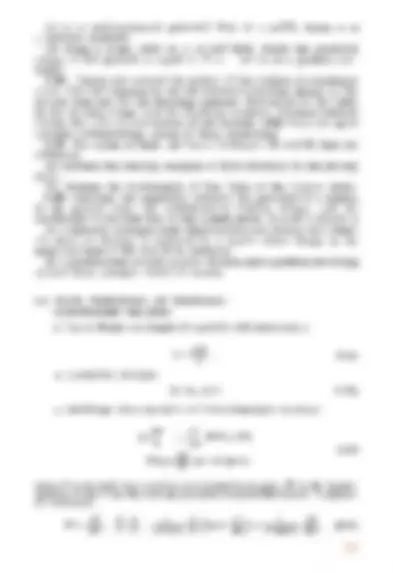





Study with the several resources on Docsity

Earn points by helping other students or get them with a premium plan


Prepare for your exams
Study with the several resources on Docsity

Earn points to download
Earn points by helping other students or get them with a premium plan
Community
Ask the community for help and clear up your study doubts
Discover the best universities in your country according to Docsity users
Free resources
Download our free guides on studying techniques, anxiety management strategies, and thesis advice from Docsity tutors
irodov_problems_in_general_physics_2011
Typology: Study Guides, Projects, Research
1 / 5

This page cannot be seen from the preview
Don't miss anything!




the nucleus along the circular orbits. Make sure that as n (^) oo the frequency of the photon co (^) (on. 6.21. A particle of mass m moves along a circular orbit in a centro- symmetrical potential field U (r) = kr212. (^) Using the Bohr quantiza- tion condition, find the permissible orbital radii and energy levels of that particle. 6.22. Calculate for a hydrogen atom and a He + ion: (a) the radius of the first Bohr orbit and the velocity of an electron moving along it; (b) the kinetic energy and the binding energy of an electron in the ground state; (c) the ionization potential, the first excitation potential and the wavelength of the resonance line (n' = 2 n = 1). 6.23. Calculate the angular frequency of an electron occupying the second Bohr orbit of He + ion. 6.24. For hydrogen-like systems find the magnetic moment ttn corresponding to the motion of an electron along the n-th orbit and the ratio of the magnetic and mechanical moments μn /Mn. Calculate the magnetic moment of an electron occupying the first Bohr orbit. 6.25. Calculate the magnetic field induction at the centre of a hydrogen atom caused by an electron moving along the first Bohr orbit. 6.26. Calculate and draw on the wavelength scale the spectral intervals in which the Lyman, Balmer, and Paschen series for atomic hydrogen are confined. Show the visible portion of the spec- trum. 6.27. To what series does the spectral line of atomic hydrogen belong if its wave number is equal to the difference between the wave numbers of the following two lines of the Balmer series: 486.1 and 410.2 nm? What is the wavelength of that line? 6.28. For the case of atomic hydrogen find: (a) the wavelengths of the first three lines of the Balmer series; (b) the minimum resolving power 7‘,/82n, of a spectral instrument capable of resolving the first 20 lines of the Balmer series. 6.29. Radiation of atomic hydrogen falls normally on a diffraction grating of width 1 = 6.6 mm. The 50th line of the Balmer series in the observed spectrum is close to resolution at a diffraction angle 0 (in accordance with Rayleigh's criterion). Find that angle. 6.30. What element has a hydrogen-like spectrum whose lines have wavelengths four times shorter than those of atomic hydrogen? 6.31. How many spectral lines are emitted by atomic hydrogen excited to the n-th energy level? 6.32. What lines of atomic hydrogen absorption spectrum fall within the wavelength range from 94.5 to 130.0 nm? 6.33. Find the quantum number n corresponding to the excited state of He ion if on transition to the ground state that ion emits two photons in succession with wavelengths 108.5 and 30.4 nm.
6.34. Calculate the Rydberg constant R if He ions are known to have the wavelength difference between the first (of the longest wavelength) lines of the Balmer and Lyman series equal to AA. = = 133.7 nm. 6.35. What hydrogen-like ion has the wavelength difference be- tween the first lines of the Balmer and Lyman series equal to 59.3 nm? 6.36. Find the wavelength of the first line of the He ion spectral series whose interval between the extreme lines is A co = = 5.18.1015s— 1, 6.37. Find the binding energy of an electron in the ground state of hydrogen-like ions in whose spectrum the third line of the Balmer series is equal to 108.5 nm. 6.38. The binding energy of an electron in the ground state of He atom is equal to E0 = 24.6 eV. Find the energy required to remove both electrons from the atom. 6.39. Find the velocity of photoelectrons liberated by electromag- netic radiation of wavelength? = 18.0 nm from stationary He ions in the ground state. 6.40. At what minimum kinetic energy must a hydrogen atom move for its inelastic head-on collision with another, stationary, hydrogen atom to make one of them capable of emitting a photon? Both atoms are supposed to be in the ground state prior to the colli- sion. 6.41. A stationary hydrogen atom emits a photon corresponding to the first line of the Lyman series. What velocity does the atom acquire? 6.42. From the conditions of the foregoing problem find how much (in per cent) the energy of the emitted photon differs from the energy of the corresponding transition in a hydrogen atom. 6.43. A stationary He ion emitted a photon corresponding to the first line of the Lyman series. That photon liberated a photoelectron from a stationary hydrogen atom in the ground state. Find the velocity of the photoelectron. 6.44. Find the velocity of the excited hydrogen atoms if the first line of the Lyman series is displaced by A? = 0.20 nm when their radiation is observed at an angle 0 = 45° to their motion direction. 6.45. According to the Bohr-Sommerfeld postulate the periodic motion of a particle in a potential field must satisfy the following quantization rule:
p dq=
where q and p are generalized coordinate and momentum of the particle , n are (^) integers. Making use of this rule, find the permitted values of energy for a particle of mass m moving (a) in a unidimensional rectangular potential well of width 1 with infinitely high walls; (b) along a circle of radius r;
6.49. Calculate the de Broglie wavelengths of an electron, proton, and uranium atom, all having the same kinetic energy 100 eV. 6.50. What amount of energy should be added to an electron to reduce its de Broglie wavelength from 100 to 50 pm? 6.51. A neutron with kinetic energy 7' = 25 eV strikes a sta- tionary deuteron (heavy hydrogen nucleus). Find the de Broglie wavelengths of both particles in the frame of their centre of inertia. 6.52. Two identical non-relativistic particles move at right angles to each other, possessing de Broglie wavelengths k7and X,. Find the de Broglie wavelength of each particle in the frame of their centre of inertia. 6.53. Find the de Broglie wavelength of hydrogen molecules, which corresponds to their most probable velocity at room tempera- ture. 6.54. Calculate the most probable de Broglie wavelength of hydrogen molecules being in thermodynamic equilibrium at room temperature. 6.55. Derive the expression for a de Broglie wavelength X of a rela-
does the error in determining X using the non-relativistic formula not exceed 1% for an electron and a proton? 6.56. At what value of kinetic energy is the de Broglie wavelength of an electron equal to its Compton wavelength? 6.57. Find the de Broglie wavelength of relativistic electrons reaching the anticathode of an X-ray tube if the short wavelength limit of the continuous X-ray spectrum is equal to 21,3h = 10.0 pm? 6.58. A parallel stream of monoenergetic electrons falls normally
Find the velocity of the electrons if the width of the central diffrac-
from the slit is equal to Ax = 0.36 mm. 6.59. A parallel stream of electrons accelerated by a potential difference V — 25 V falls normally on a diaphragm with two narrow
between neighbouring (^) maxima of the diffraction pattern on a screen
6.60. A narrow stream of monoenergetic electrons falls at an angle of incidence 0 = 30° on the natural facet of an aluminium single crystal. The distance between the neighbouring crystal planes
(6.2e)
if the next maximum mirror reflection is known to be observed when the accelerating voltage is increased ri = 2.25 times. 6.61. A narrow beam of monoenergetic electrons falls normally on the surface of a Ni single crystal. The reflection maximum of fourth order is observed in the direction forming an angle 0 = 55° with the normal to the surface at the energy of the electrons equal
distance.
a system of diffraction fringes on a screen. Calculate the interplanar distance corresponding to the reflection of third order from a certain system of crystal planes if it is responsible for a diffraction ring of
falls on the surface of a metal whose inner potential is V 1= 15 V. Find: (a) the refractive index of the metal for the electrons accelerated
(b) the values of the ratio 1//1/ iat which the refractive index differs from unity by not more than rl-- 1.0%.
potential well with infinitely high walls. The width of the well is equal to 7. Find the permitted values of energy of the particle taking into account that only those states of the particle's motion are realized for which the whole number of de Broglie half-waves are fitted within the given well. 6.65. Describe the Bohr quantum conditions in terms of the wave theory: demonstrate that an electron in a hydrogen atom can move only along those round orbits which accommodate a whole number of de Broglie waves. 6.66. Estimate the minimum errors in determining the velocity of an electron, a proton, and a ball of mass of 1 mg if the coordinates of the particles and of the centre of the ball are known with uncer- tainly 1 6.67. Employing the uncertainty principle, evaluate the indeter- minancy of the velocity of an electron in a hydrogen atom if the
magnitude with the velocity of an electron in the first Bohr orbit of the given atom. 6.68. Show that for the particle whose coordinate uncertainty is =X/2n, where X is its de Broglie wavelength, the velocity uncertain- ty is of the same order of magnitude as the particle's velocity itself. 6.69. A free electron was initially confined within a region with
evaluate the time over which the width of the corresponding train of waves becomes = 10 times as large.